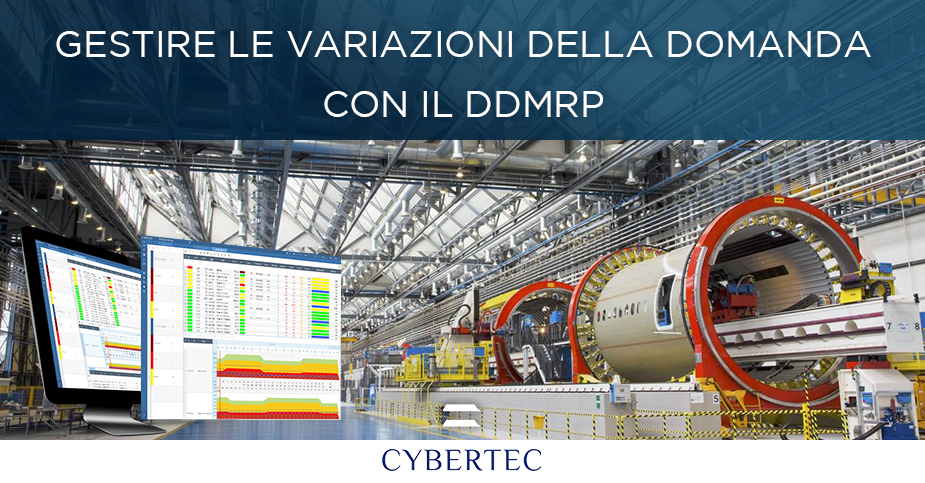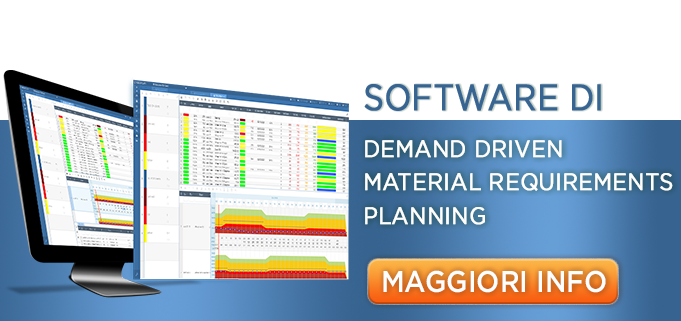The current situation, also due to recent events, is characterized by great uncertainty. In the coming months, moreover, in all likelihood, the volatility of demand will come out of the classic logic and depending on the evolution of the scenarios due to Covid-19, as well as the sector in which each company operates, there will be different situations.
This high variability may not be controllable but what companies can do is focus on methods and tools used internally to respond quickly to external changes and therefore focus and act on what the company can control.
Increasing agility means preparing the company organisation in such a way as to catch changes in demand in time and increase the reactivity of the entire production cycle. What can companies actually do? Today manufacturing companies can use different methods to improve responsiveness to demand.
How to improve demand responsiveness?
To improve responsiveness to demand, companies can, for example, use distribution centres as a capacitive buffer or use stock allocation tools to understand priorities between different channels, markets and customers thanks to cost/benefit analyses.
Another issue, which is increasingly important in improving responsiveness to changes in demand for manufacturing companies, is the integration between the world of production planning and that of execution. This aspect allows companies to improve their approach to last-minute changes, both in terms of production and purchases.
Another important aspect is the ability of companies to synchronize sourcing and manufacturing; the first concerns the development and management of suppliers, the second production. Today many companies operate within global supply networks, including customers, suppliers and production plants located in different countries, which complicates the communication and exchange of information between the different actors.
What is Demand-Driven Manufacturing?
Demand-Driven Manufacturing refers to the process where production is driven primarily by confirmed customer orders, rather than sales forecasts. For this purpose, it is important to integrate demand information with that of factories and suppliers to allow companies to manage the conversion between planned, implemented and re-planned in a dynamic way. Some steps to enable all the potential benefits are:
- The creation of buffers for critical components: to take a first step to reduce the lead time of the finished product and increase the speed of reaction to changes in demand, it is useful to rethink the strategic positioning of buffers, have a more dynamic approach in the definition of safety stocks and replenishment plans – taking into account factors such as acquired orders, forecasts, trends and market variability.
- Prioritization of orders and finite capacity planning: it is necessary to allow the creation of a production allocation sequence (orders issued and proposed); in addition, ordering productions means assigning a global priority to them according to different attributes such as: delivery date or period, customer-related attributes,etc.
- Reduction of the Frozen zone (i.e. the time interval in which the schedule can no longer be modified): the shorter this period, the greater the possibility of improving flexibility, agility and responsiveness towards its customers.
- Interchangeability of labour and rapid re-equipment of lines: the possibility of changing production from one to another in a shorter period allows you to focus on the most requested products and reduce potentially lost sales.
- Visibility on progress: having a view of Work In Progress (WIP)
the reliability and accuracy of the information received from critical factories and suppliers helps to have a complete view. - Real integration with critical suppliers: the exchange of plans upstream of the supply chain allows to transfer consumer demand to suppliers with the possibility of defining strategic stocks on critical components with a higher lead time.
The ultimate goal is to provide the company with tools that allow countermeasures decisions to be taken in the event of changes in priority orders or consumer purchase forecasts, delays in supply and production.
Software support for Demand Driven Manufacturing
It is important for a company to coordinate the flows of materials between the different actors (to avoid unnecessary surpluses and accelerations and the creation of unused stocks) and to do this it can use the latest software solutions available today.
Companies can and should equip themselves with appropriate tools that allow managers to manage demand, planning, scheduling, production and supplier control. In addition, it must be taken into account that all this must be integrated with the ERP system present in the company.
An example of a Demand Driven Manufacturing system
A Demand-driven Manufacturing architecture is typically composed of several elements. These include:
- The demand management system integrates sales orders frequently and generates new forecasts, even several times a day;
- The inventory management system allows the dynamic management of replenishment plans and buffers;
- The planning system filters orders using finite capacity reasoning before launching the MRP. It is certainly better to work on a feasible plan rather than feeding the scheduler with a production order book generated at infinite capacity;
- The scheduler operates only on orders issued by the MRP: the objective is to generate the short-term detailed production plan considering constraints, optimization rules and the current situation of suppliers and production.
- The production progress system (or MES) integrates real-time information on the progress of orders, any shortages or delays, so as to allow alignment with other departments, increasing visibility and the possibility of managing exceptions.
- Finally, the supplier management system allows greater visibility also on any delays and shortcomings upstream of the production process, the purpose is to comply with the fulfillment of orders.
The interoperability of the different systems assumes a central role to ensure the sharing of information between internal and external departments of the company, every day last-minute changes must be taken into account, through cost-benefit analysis, and shared between the different actors and tools.
Learn how to equip your company with a Demand Driven MRP
Get advice from supply chain experts about the possibility of adopting DDMRP (Demand Driven MRP) software in your company and its perfect integration with your SAP, Oracle, Zucchetti (or other) ERP and the benefits that it could bring you. Cybertec consultants are available to listen to your wishes and expectations and recommend the best solution for your company. Click here:

